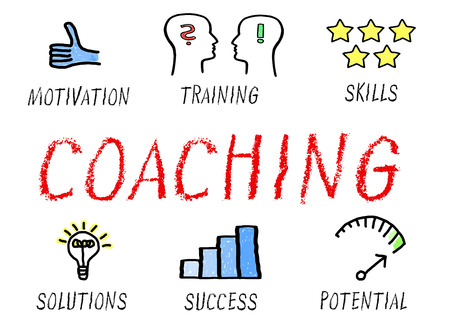
Personal trainers are always looking for new ways to motivate their clients and sometimes it can be a struggle. Motivational interviewing could offer a breakthrough, taking your professionalism as a coach to the next level. When you employ this set of techniques with your personal training clients, you can astutely identify where they fall within Prochaska’s Stages of Change.
What are the Stages of Change?
The Stages of Change were developed by Prochaska and colleagues to categorize a persons readiness for change. Being able to identify which of these five stages a person is in helps you speak directly to them where they’re at and be a more effective influencer.
Pre-contemplation
“Exercise, yeh that’s good stuff. It’s not for me. I get the mail each morning, that’s enough.” The cons outweigh the pros for this person and they’re not likely to make any changes to their lifestyle. This stage denotes someone who is not interested in taking on a behavior change at this time.
What You Can Do
Don’t give up on them, but don’t waste too much breath either. When you do cross paths, listen more than you talk. People drop clues and hints if you listen instead of giving advice and opinions. They might have grandchildren that they can’t keep up with or have a health issue that interferes with their lives. 
Connecting exercise to these deeper goals is your best chance of making a difference. Employing active listening as outlined in the section below and eventually providing them with facts that they can specifically relate to is the best way to win them over and get them contemplating…
Contemplation
“I’ll start exercising next month, when I get back from my business trip.” They have good intentions, but it’s all talk – without action. They view themselves as someone who should exercise, but there are just as many pros as cons. They are swimming in ambivalence
What You Can Do
You can start to help them resolve this ambivalence. Talk to them about how regular exercise would make them feel. Say, “Have you exercised in the past? How did it make you feel? What worked? What didn’t?” Imagination and visualization are powerful tools. Work to tip the scale so that the pros outweigh the cons by pairing it with their emotions.
Preparation
“I bought new running shoes so I can get back on track. I used to run five miles a day in college. Time to get back on the horse!” These people are similar to contemplators, but have taken that extra mental and possible physical step, making them more ready for change.
What You Can Do
Encourage them to take baby steps and do what is manageable in their world at the moment. Help them identify time in their schedule to start exercising or find a buddy to workout with. Have them keep an exercise journal or track their daily steps. Raise their awareness about being consistent.
Keeping track or having an accountability partner are two proven methods for this.
If they do a trial session with you, don’t make it so hard that they can’t walk the next day. They need to succeed and not have positive experiences, not negative ones. Their confidence about exercising may not be as high as their intention.
Action (most personal training clients)
“I’ve been working out at your gym for five weeks. I want to bump it up a notch by getting a personal trainer.” These people have been exercising for less than six months and they’re highly motivated. However, 50% of people drop out during the first six months, it’s a fragile time. The goal is to get them past that mark into the next stage of maintenance.
What You Can Do
Action folks will buy sessions from you with ease, but don’t get over-excited or think they’re a client for life because of their enthusiastic intentions. Adapting a new habit is challenging, so check in frequently.
Be careful that they don’t over-commit or overdo it. Find out what motivates them and keep them focused on that. Set achievable goals with them. Pay careful attention to any cues that they’ll relapse back into sedentary behavior, such as canceling sessions and making excuses about eating habits. Address these immediately.
Maintenance (we all want these clients)
“I’ve been working out since college. I need to mix it up and had a personal trainer in the past. Are you taking new clients?” This is every personal trainer’s ideal client, motivated, and committed.
Their #1 setback is injury, with schedule interruptions being a close second.
What You Can Do
Tap into their personality type, what their needs are, and keep them interested. Help them see potential barriers such as an upcoming holiday party or vacation. Emphasize injury prevention and make sure they aren’t over-training.
Time For Action!
Now it’s time for you to practice these skills. Analyze the people in your life and see if you can pinpoint their stage of change. Transform your conversations according to each person’s phase. It’ll become more natural as you go.
What is Motivational Interviewing?
Motivational interviewing (MI) is defined as “both a treatment philosophy and a set of strategies to help people increase their own internal drive to change” (Brehm, 2104). MI is particularly useful for building rapport and encouraging the ambivalent client who may seem “lost” or uncertain of why change is beneficial.
Ambivalence describes a state in which a person doesn’t have strong feelings one way or the other about change. They are uncertain or have mixed feelings. They’re waffling.
MI provides a professional with the tools to employ an indirect and personal style of communication that fosters change through motivation, encouragement, support, and assistance; this approach evokes a client’s self-efficacy.
In other words, clients who are in the earliest stages of change respond well to MI as part of the training process. MI becomes unnecessary if a client has already adopted and is actively engaged in change.
Fitness professionals who develop even a moderate comfort level and competence with MI are more likely to coach their clients toward success than those who do not.
Why is Motivational Interviewing Important?
The value of Motivational Interviewing has long been documented. What research in the behavior change and psychological arenas demonstrated is that MI is an effective approach to not only encourage the cessation of a negative habit but to cultivate the establishment of new and healthier habits.
Adopting MI as a communication style gives professionals a pathway to more deeply explore why someone is interested in change and what perceived barriers, fears, or misconceptions a client may have.
The “Spirit” of Motivational Interviewing (MI)
Miller and Rollnick (2013) describe what they call “the spirit of MI” which includes the components of:
- collaboration
- acceptance
- compassion
- evocation
The first characteristic, collaboration, reinforces the client-centered nature of behavior change and coaching. Acceptance is related to how the coach views and appreciates the client – with respect, empathy, and positive regard. The compassion component reflects the principle of doing what is in the best interest of the client.
The final characteristic, evocation, is the art of conversing with the client in such a way that he or she comes to realize personal needs rather than the coach simply telling a client “here’s what you need to do”. MI is, again, about coaching a client towards change by collaborating rather than directing. We are a partner and gentle guide in our clients’ individual journeys of change (ACE, 2014, Miller & Rollnick, 2013).
How to conduct Motivational Interviewing – Core skills
While there are four key characteristics that define MI as a communication style, there are also four skill areas that make up an effective MI session. Miller & Rollnick (2013) describe the collective set of skills using the acronym OARS. The OARS acronym represents open-ended questioning, affirmation, reflective listening, and summarizing.
O – Open-ended Questioning
Open-ended questions require deliberate and detailed responses from clients rather than a “yes” or “no”. Compare and contrast the following sample dialogues.
Coach: Is your goal to lose weight?
Client: Yes.
Vs.
Coach: Describe for me why you feel weight loss is important to you.
Client: My doctor indicated that I need to lose weight to decrease my risk of developing chronic diseases. Both of my parents had heart disease and type 2 diabetes. I also have young children and they are both active in sports. I’d like to be able to practice with them, keep up, and set a good example! I used to be extremely active and in sports myself – and I loved it and miss it, but adulthood “got in the way” and threw me off course.
By asking the yes/no question, the coach learned nothing more than the client wants to lose weight. In contrast to the open-ended question, the coach learned a bit about family history, that the client is partially motivated by outside pressures (her doctor and family history), and desires to be active with and for her children.
The coach also learned a few details about the client’s previous activity history. This is all valuable information the coach can use to guide and encourage the changes the client ultimately needs to make in order to achieve the surface goal of weight loss.
Another example might be a client telling you that she feels she is unable to exercise consistently because she is too tired. You could respond by saying “What do you feel are the root causes of your fatigue?”
A – Affirmation
This skill involves using affirming statements that highlight a client’s efforts and strengths. This is key to building a client’s self-efficacy. Affirmation also helps drive the development of intrinsic motivation.
Humans inherently want to seek affirmation as a way of building confidence. A trainer can affirm a client’s statements by using “you” instead of “I”.
For example, instead of stating “I am happy you did X” you can say “You did a great job of identifying triggers for stress and finding ways to manage those triggers in a positive way.” Affirming statements encourage the client to keep going and help to reframe a negative mindset to a positive one.
We often hear clients say something such as “I missed my workout this morning. I failed.” We can turn this thought process around by saying “You remembered to take your walks throughout the day. Remember when you first started and taking intermittent walks to break up the day seemed impossible?” This moves the “deficit” mentality to the “strengths” mentality.
R – Reflective Listening
Being a reflective listener requires the ability to probe the client in thinking deeper about his or her words or something the client has shared with you. In other words, the coach reflects back to the client what he or she has heard in listening to the client describe X or Y. This gives the coach or trainer an opportunity to clarify or seek a deeper understanding.
Here, the professional can clarify the meaning behind what a client says. Reflective comments encourage the client to think longer about something he or she said during the conversation. A client may say “My work environment does not support my goals.”
You might reflect by saying “It will be a challenge to find the support you need in your professional setting.” The client can agree, disagree, or expand upon the earlier statement.
Reflective listening is a way of challenging a client’s thinking. It is not a method to refute or dismiss a client’s thoughts or feelings. It’s a time to foster a deeper level of thinking. *If you learn any skill in this toolbox really well, it should be this one!
S – Summarizing
Summarizing is just as it sounds; bringing the points of the conversation together and synthesizing the information shared. This skill is tremendously valuable in that it presents an opportunity for the client to overcome any initial ambivalence (ACE, 2014; Miller & Rollnick, 2013).
The professional summarizes what he or she heard the client say throughout the conversation. This is done at the end of the MI session. For example, “Let me summarize what you shared with me so far. I hear you feel…and…etc. Does this sound accurate?”
Motivational Interviewing takes time to learn and implement with clients. Miller and Rollnick suggest the following four questions to use with clients who may be ambivalent to change:
1. Why do you want to make this change?
2. How might you go about making this change?
3. What are the three best reasons for you to do it?
4. How important is it for you to make this change and why?
Engage in the MI process by affirming, reflecting, and summarizing the answers the client provides and then follow-up by asking “What do you think you’ll do to move forward?”.
How MI Progresses Through the Coaching Experience
There are four “umbrellas” of MI. Engaging, Focusing, Evoking, and Planning (ACE, 2014). It’s important to note that not every MI session will include all four phases or proceed linearly. These four phases describe, in general, how the client-coaching relationship is formed.
Step 1: Engaging or the process of building rapport and taking initial steps to build a trust-based relationship with a client.
Step 2: Focusing or setting the agenda for the coaching experience. This involves identifying what the client wishes to achieve.
Step 3: Evoking or exploring the client’s motivation to make a change.
Step 4: Planning or the process of collaboratively putting a plan of action into place. This occurs once the client has decided to make a change.
Advantages of Motivational Interviewing
MI has been studied and used for over 40 years. Its success is well-documented and validated in multiple areas of research.
MI is effective for encouraging and motivating change beyond what a client could or would accomplish alone. It is also a validated exploratory tool that provides a coach deeper insight into potential barriers or reasons for a client’s ambivalence (ACE 2014).
There is also clinical research validating the effectiveness of MI as a change tool. In general, healthcare research results reflect that MI provides healthcare workers with valuable tools to assist their patients in making a meaningful change (Johnston & Stevens, 2013). Other research has examined patient experience. For example, in one study post-stroke victims experienced improved outlooks on life and higher survival rates after participating in motivational interviewing sessions (Archer, 2011).
Criticisms of Motivational Interviewing
There’s no perfect framework or design and MI isn’t an exception. As many other theories have experienced, MI has its limitations.
MI is a lengthy process and, therefore, takes time. MI is also a multi-phased approach that has a unique nuance, which ultimately means it takes commitment and devotion on the part of the professional to learn and to master.
Unrelated to the fitness industry but still valuable to note, there are questions of efficacy as MI applies to younger populations – specifically with substance use and abuse (Headspace.org, 2012; Sage, 2009).
Despite the criticisms, overwhelming evidence in many areas of human behavior suggests that MI is more beneficial than not, but the efficacy of the approach is dependent upon the professional developing – at a minimum – a basic competence in executing the approach.
Because Motivational Interviewing is considered a cornerstone of coaching behavior change, learning more about it can help you encourage change with your clients so that the change becomes a sustainable and vital part of their lives. See the resources at the end of this article.
Are you a Certified Personal Trainer? Do you use Motivational Interviewing with clients?
References
American Council on Exercise. 2013. ACE Health Coach Manual. San Diego, CA: ACE
American Council on Exercise. 2014. Coaching Behavior Change, San Diego, CA: ACE
Archer, S. 2011. Motivational Interviewing Improves Post-Stroke Outlook and Survival. IDEA Fitness Journal, 8(11). https://www.ideafit.com/fitness-library/motivational-interviewing-improves-poststroke-outlook-and-survival
Brehm, B. 2014. Psychology of Health and Fitness. Philadelphia, PA: F.A. Davis Company
Miller, W., & Rollnick, S. 2013. Motivational Interviewing: Helping People Change. New York, NY: Guilford.
Johnston, C., & Stevens, B. 2013. Motivational Interviewing in the Health Care Setting. American Journal of Lifestyle Medicine, 7(4), 246-249.
https://headspace.org.au/assets/Uploads/Motivational-Interviewing-problematic-substance-use.pdf
http://journals.sagepub.com/doi/pdf/10.1177/1742395309102242
Resources
Health Behavior & Health Education: Theory, Research, & Practice, 5th Ed. (Glanz, Rimer, & Lewis)
Motivational Interviewing: Helping People Change, 3rd. Ed. (Miller & Rollnick).
The Psychology of Health and Fitness (Barbara Brehm).
Motivational Interviewing Network of Trainers (MINT)







